Key takeaways
- Street art serves as a powerful medium for expression, transforming public spaces into platforms for diverse narratives, particularly those from marginalized communities.
- Engagement with street art should be respectful, acknowledging the context and meanings behind each piece, as they reflect lived experiences and social issues.
- Documenting street art experiences fosters personal connections, allowing individuals to capture the emotions and stories that resonate with them, creating a shared communal archive.
- Exploring street art provides insights into resilience and identity, highlighting the enduring spirit of artists and the connections formed through unspoken narratives.
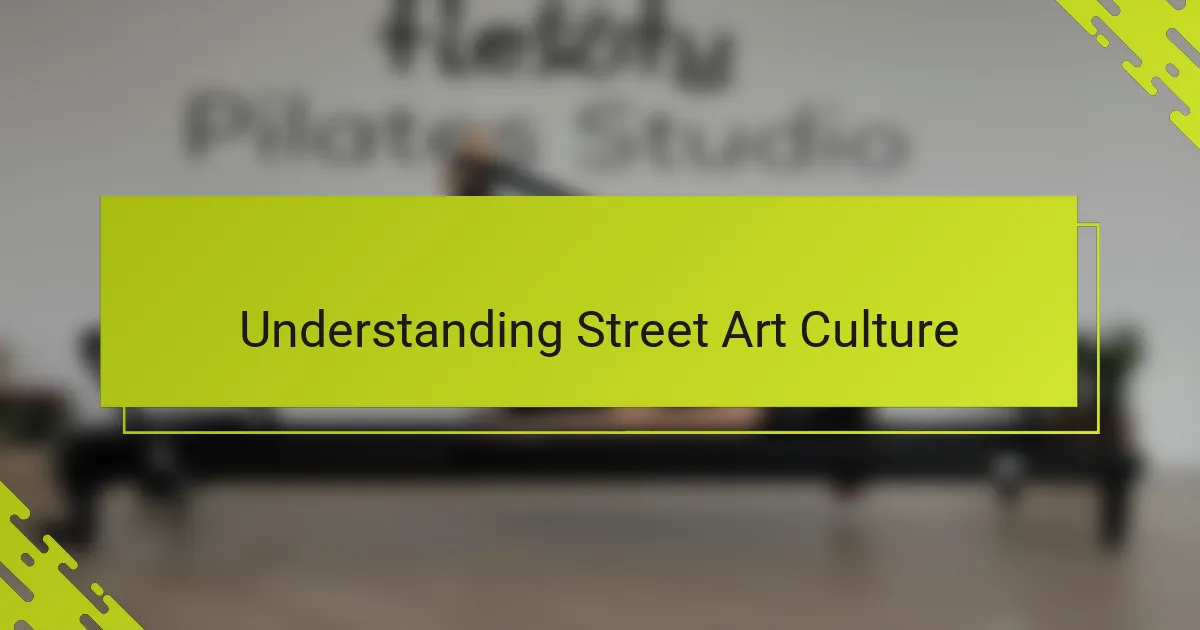
Understanding Street Art Culture
Street art culture fascinates me because it thrives on expression beyond conventional spaces. It’s raw, unfiltered creativity splashed across city walls, turning ordinary streets into vibrant galleries. Have you ever paused to think about how these spontaneous bursts of art challenge who controls public space and voice?
What strikes me most is the diversity within this culture—each piece tells a story, often rooted in identity, resistance, or celebration. As a queer woman, I find these messages resonate deeply, offering visibility and empowerment in unexpected places. Doesn’t it make you wonder how many untold stories exist behind every stencil or mural you pass by?
Engaging with street art culture also means understanding its rebellious heartbeat. It isn’t just about aesthetics; it’s about reclaiming space and narrative in a world that can feel limiting. I’ve felt that rush of connection when spotting a piece that reflects my own experience, reminding me that art can be both private and profoundly communal.
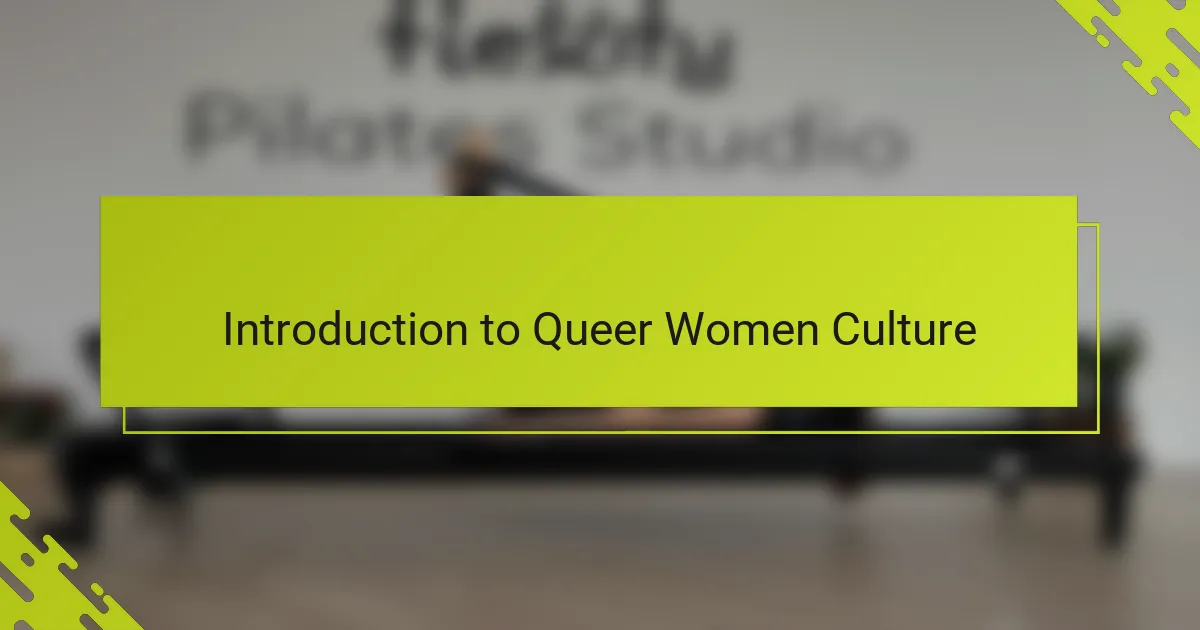
Introduction to Queer Women Culture
Queer women culture has always felt like a vibrant tapestry woven from threads of resilience, creativity, and authenticity. From my experience, it’s a space where identities are not only embraced but celebrated in all their complexity. Have you ever noticed how this culture offers a unique lens on self-expression that challenges mainstream narratives?
What I find particularly powerful is how queer women culture creates community through shared stories and lived experiences. It’s more than just identity—it’s a collective force that inspires me to express myself boldly and unapologetically. Sometimes I marvel at how this culture sparks connections that feel both deeply personal and widely universal.
Being part of this culture means constantly learning and evolving. It invites me to question norms and celebrate difference, often through art, activism, and everyday resilience. Don’t you think that kind of dynamic energy shapes how we see the world and ourselves in it?
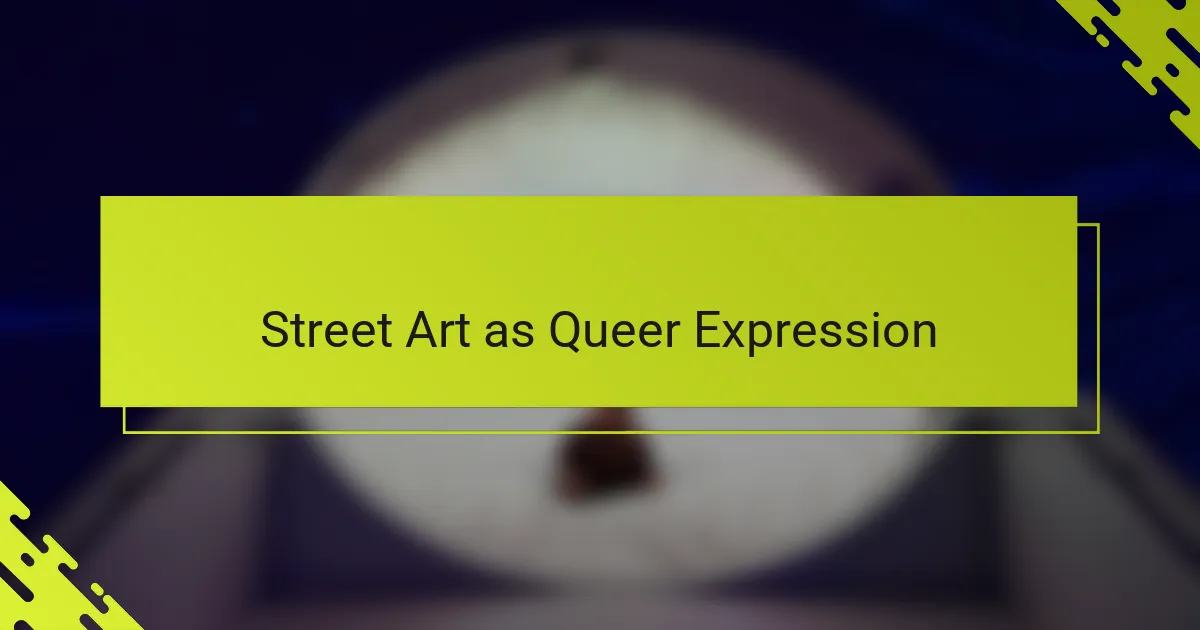
Street Art as Queer Expression
Street art, for me, feels like a vivid outcry from the margins, where queer expression thrives in bold color and daring form. I remember seeing a mural that celebrated non-binary identities right in the heart of a conservative neighborhood—it was such a powerful act of visibility that made me pause and reflect on how much courage it takes to claim space like that. Have you ever stumbled upon a piece that instantly spoke your truth without saying a single word?
What amazes me is how street art becomes a living diary of queer experiences, capturing moments of joy, struggle, and resilience in ways mainstream culture often overlooks. The rawness and impermanence of these works mirror the fluidity of identity itself, reminding me that expression doesn’t always need polish to be profound. Isn’t it incredible how a spray-painted symbol or phrase can create an immediate sense of belonging, even among strangers?
I’ve also noticed how street art challenges societal norms by turning public spaces into canvases for queer narratives that refuse to be erased. When I see these artworks, it feels like a rebellion—not just against walls, but against silence and invisibility. Doesn’t this make you wonder how many more stories are waiting to break free from the shadows and color our streets with truth?
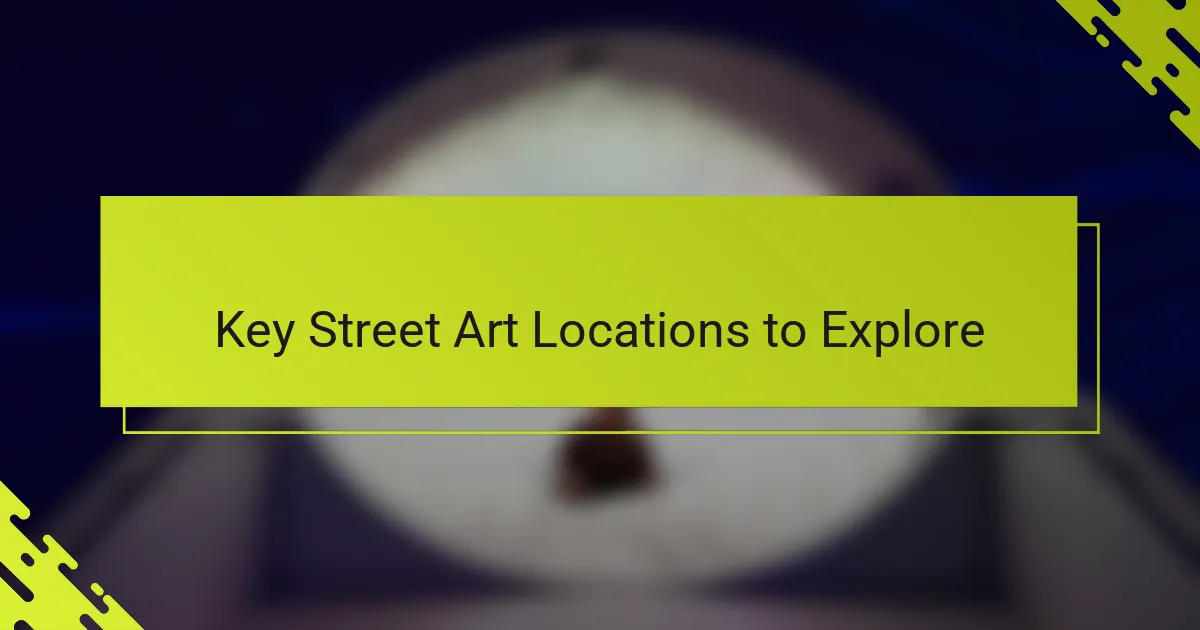
Key Street Art Locations to Explore
One spot that always pulls me in is the Wynwood Walls in Miami. Walking through this open-air museum feels like stepping into a living scrapbook of street art—from bold murals to intricate stencils—each telling stories that often echo queer experiences. Have you ever found yourself standing before a mural that made you feel seen, even if you’ve never met the artist?
In my travels, the Shoreditch area in London never fails to surprise me with its ever-changing art scene. Here, alleyways pulse with vibrant colors and provocative messages, turning the neighborhood into a dynamic community canvas. It makes me wonder how many layers of meaning go unnoticed by those simply rushing through their day.
Closer to home, I’ve found that smaller neighborhoods can hold some of the most intimate street art gems. These hidden corners often host works that speak directly to local queer histories or moments of resistance, offering a sense of connection that feels both personal and profound. Isn’t it amazing how these less famous spots can make the streets whisper stories just for those willing to look?
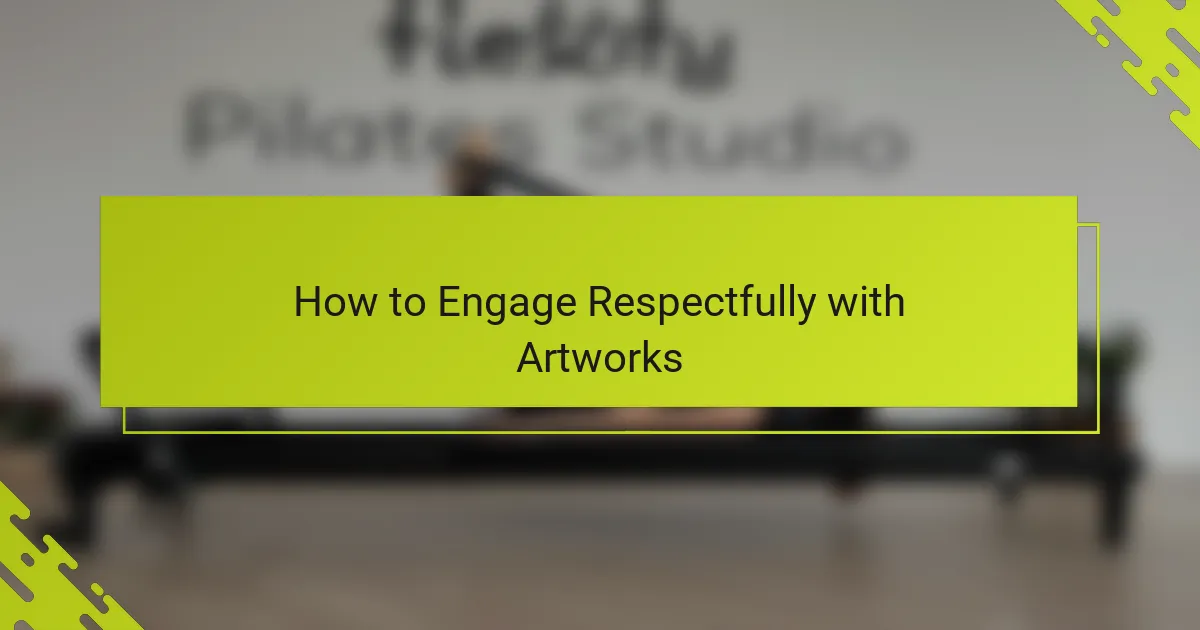
How to Engage Respectfully with Artworks
Respecting street art means honoring its context and the voices behind it. I always remind myself that these pieces aren’t just decoration—they’re lived experiences and powerful statements. Have you ever hesitated before touching or photographing a mural, wondering whether your actions might feel intrusive to the artist or community?
When I engage with street art, I try to observe without disrupting. That means appreciating the work from a distance, avoiding any interference with the physical space, and being mindful of the neighborhood’s rhythms. It’s about showing up as a thoughtful witness, not a casual bystander, because these artworks often carry deep cultural or political significance.
One time, I struck up a conversation with a local artist near a vibrant mural. That moment taught me how dialogue can deepen my understanding and respect. Have you found that engaging directly with artists or community members adds layers of meaning that you wouldn’t get just by looking? For me, those exchanges turn street art into a shared experience rather than a fleeting spectacle.

Documenting Street Art Experiences
Documenting street art experiences has become a way for me to preserve moments of raw expression that might otherwise fade into the city’s background noise. I often carry my camera or phone, snapping photos that capture not just the artwork, but the surrounding environment—because context shapes meaning in ways we sometimes overlook. Have you ever noticed how a mural’s impact changes when you include the cracked wall it’s painted on or the busy street beside it?
Sometimes, I hesitate before sharing these images online, wondering about the artist’s intent and the story behind the work. Does documenting risk stripping away the piece’s spontaneity or turning it into just another Instagram post? For me, the balance lies in honoring the art’s message while inviting others to see and reflect, much like I do when discovering it in person.
I’ve found that journaling alongside photos helps deepen my connection—writing down the feelings a piece stirs or the questions it raises. This practice transforms street art from a fleeting encounter into a personal archive of queer voices and queer resilience expressed on urban canvases. What about you—how do you capture and carry forward those moments that speak to your experience?
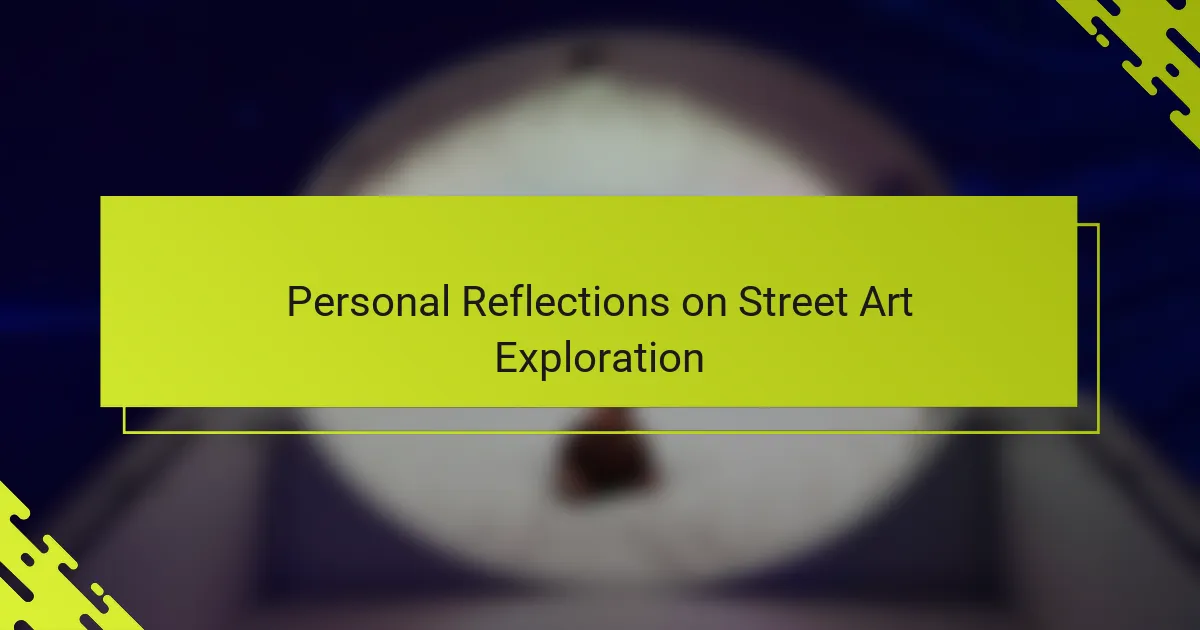
Personal Reflections on Street Art Exploration
Encountering street art feels like stepping into a secret dialogue between the artist and the city, one that often mirrors my own journey as a queer woman. I recall pausing for several minutes in front of a vibrant mural that seemed to pulse with defiance and hope—it made me feel both seen and connected to a wider community. Have you ever had that sudden, almost electric moment where an artwork just gets what you’re feeling without a single word exchanged?
Sometimes, exploring street art leads me to unexpected reflections about vulnerability and resilience. When I see a fragile, fading stencil clawing its way through cracked concrete, it reminds me how queer voices persist despite erasure and time. Isn’t it powerful to witness this resilient spirit broadcast so boldly in public spaces where anyone can walk by or ignore it?
There’s also a strange intimacy that happens during these explorations. I’ve often caught myself wondering about the person behind the spray can—their fears, hopes, and intentions—and how our experiences intersect, even if we’ll never meet. Doesn’t that thought spark a feeling of hidden solidarity, as if street art connects us through shared stories written without words?
